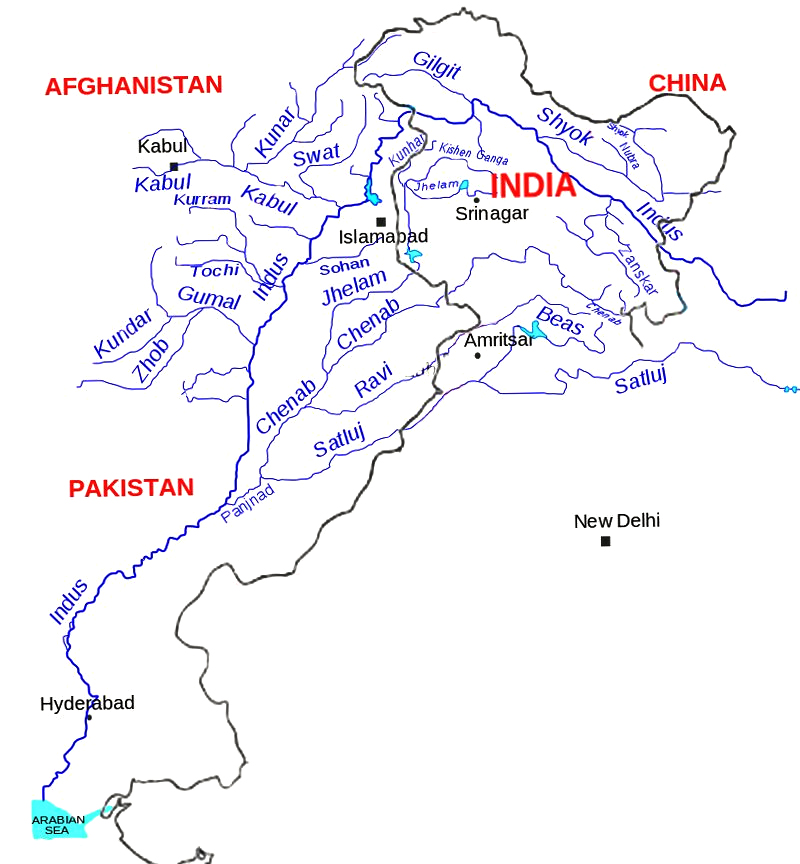Biodiversity & Environment
Sutlej River Pollution
- 30 Jul 2021
- 5 min read
Why in News
The pollution in river Sutlej has posed serious health threats to the people living around the Indira Gandhi Canal.
- The National Green Tribunal (NGT) has directed Punjab and Rajasthan governments to submit quarterly compliance reports to Jal Shakti ministry about remedial action being taken to curb the inflow of effluent discharge into the Satluj and Beas.
Key Points
- Source of Sutlej’s Pollution:
- Three Major Sources Polluting the Buddha Nallah: Buddha Nallah (Tributary) is a major source of pollution in the river Sutlej.
- Untreated sewage waste from Ludhiana city sewage treatment plants (STP).
- Untreated industrial effluents from dyeing units and outlets that directly release sewage and industrial waste into the stream.
- Small-scale industries like units on electroplating, hosiery, steel rolling mills, etc mainly contribute to the wastewater in the nallah.
- High Biological Oxygen Demand (BOD): Buddha Nullah contributes about 16,672 kilogram a day of BOD load and East Bein (a rivulet in Doaba in Punjab) contributes about 20,900 kg/day of BOD load.
- The more organic matter there is (e.g., in sewage and polluted bodies of water), the greater the BOD; and the greater the BOD, the lower the amount of dissolved oxygen available for higher animals such as fishes.
- Leather Industry: Another seasonal rivulet, Chitti Bein and its sub-drain, Kala Sanghian drain, in the Jalandhar district are equally responsible for high pollution in the Sutlej river.
- The untreated discharge from Jalandhar’s leather goods industry is one of the major reasons behind Chitti Bein’s pollution.
- Three Major Sources Polluting the Buddha Nallah: Buddha Nallah (Tributary) is a major source of pollution in the river Sutlej.
- Component of Pollutants:
- Traces of chromium and arsenic can be found in the Sutlej after the confluence of Buddha Nullah.
- Prevalence of mercury, lead, chromium, cadmium and selenium in more than permissible limits (MPL) in the groundwater and surface water in and around drains like Buddha Nallah, Chitti Bein and Kala Sanghian.
- Heavy metals and pesticides were also detected in fodder, vegetable, milk, urine and blood samples.
- Impact on Indira Gandhi Canal:
- The Indira Gandhi Canal is the longest canal in the country.
- It starts from Harike Barrage, a few kilometres below the confluence of the Satluj and Beas rivers in Punjab, flows through Ludhiana and terminates in the Thar Desert in northwest Rajasthan.
- The canal is a source of drinking and irrigation in the north and western Rajasthan.
- It provides water to 1.75 crore people living in 7,500 villages across eight districts in the state.
- The water in the Indira Gandhi canal has apparently turned black due to the presence of pollutants in it.
- The pollution has caused several health complications among people such as skin diseases, gastroenteritis, indigestion and loss of eyesight.
- The Indira Gandhi Canal is the longest canal in the country.
Sutlej River
- The ancient name of Sutlej River is Zaradros (Ancient Greek) Shutudri or Shatadru (Sanskrit).
- It is the longest of the five tributaries of the Indus River that give the Punjab (meaning “Five Rivers”) its name.
- Jhelum, Chenab, Ravi, Beas and Satluj are main tributaries of Indus.
- It rises on the north slope of the Himalayas in Lake La’nga in southwestern Tibet.
- Flowing northwestward and then west-southwestward through Himalayan gorges, it enters and crosses Himachal Pradesh before beginning its flow through the Punjab plain near Nangal.
- Continuing southwestward in a broad channel, it receives the Beas River (and forms 65 miles (105 km) of the India-Pakistan border before entering Pakistan and flowing another 220 miles (350 km) to join the Chenab River west of Bahawalpur.
- Sutlej River meets the Beas River in Harike in the Ferozpur district before entering Pakistan.
- The combined rivers then form the Panjnad, the link between the Five Rivers and the Indus.
- Luhri Stage-I Hydro Electric Project is located on River Satluj in Shimla and Kullu districts of Himachal Pradesh.





